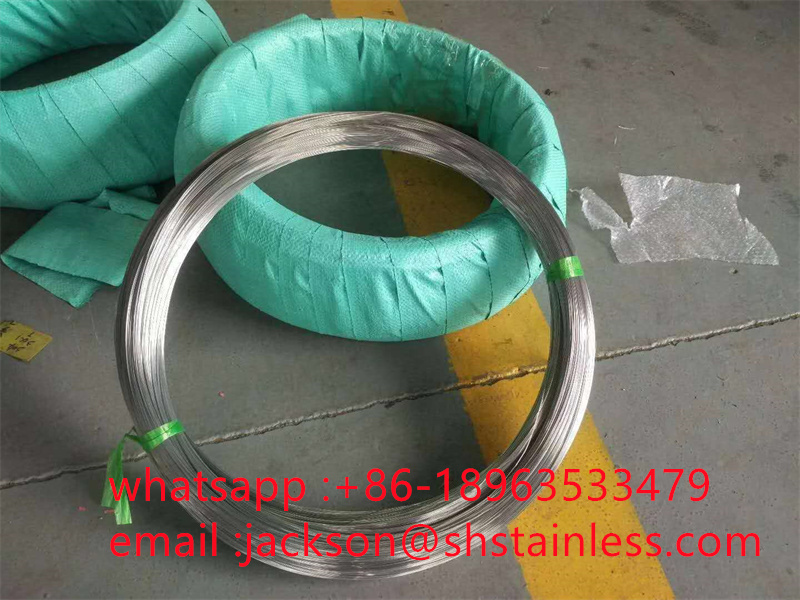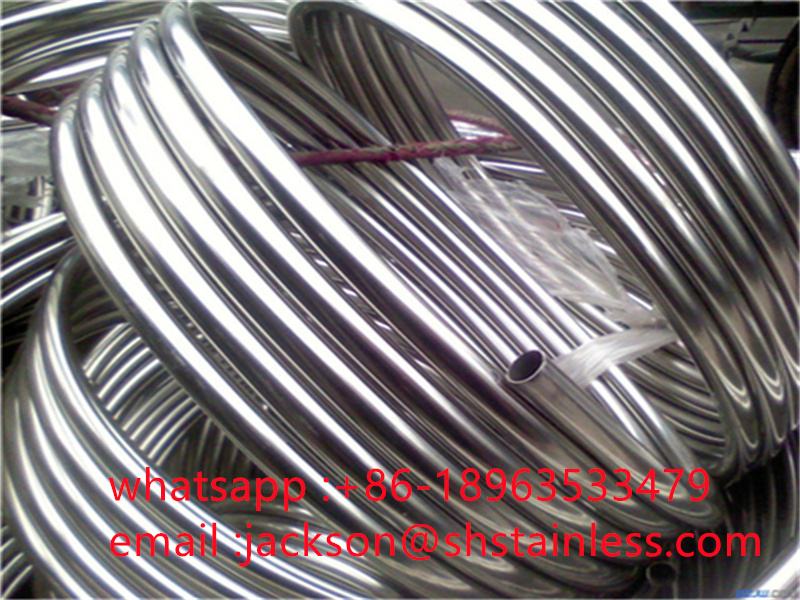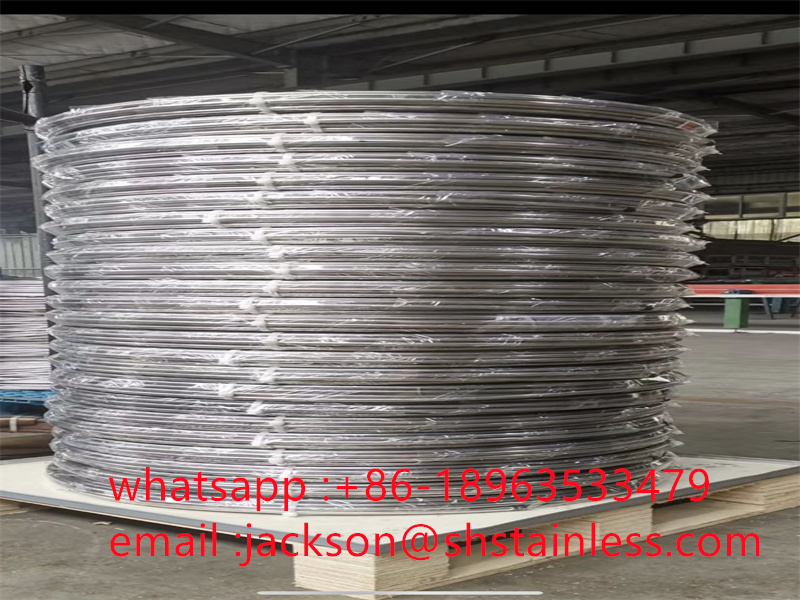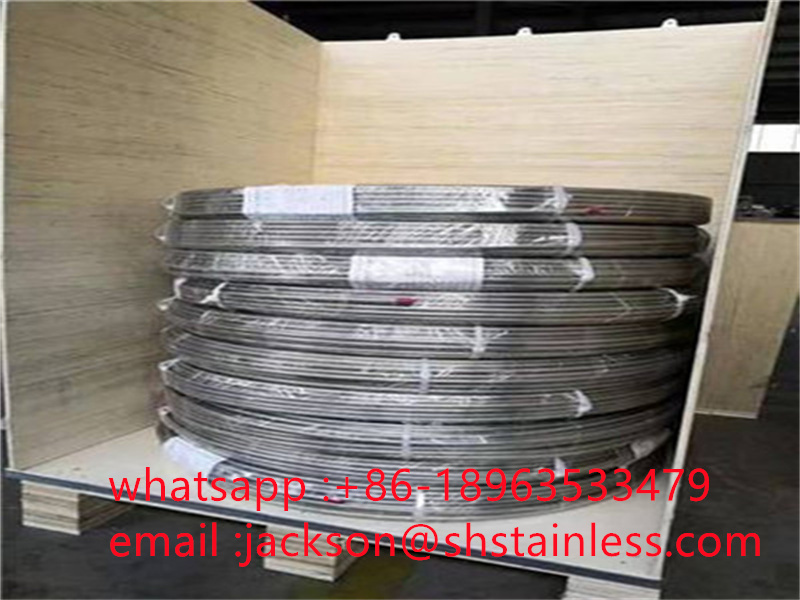Successful and efficient pipe production requires optimization of 10,000 parts, including equipment maintenance. With countless moving parts in every type of mill and every piece of peripheral equipment, maintaining the manufacturer’s recommended preventative maintenance schedule is no easy task. Photo: T&H Lemont Inc.
Editor’s Note: This is the first of a two-part series on optimizing pipe manufacturing or pipe mill operations. Read part two.
Product Description
Stainless Steel Grades
200series:201,202, etc
300series:301,302,303,304,304L,309,309s,310,310S,316,316L,316Ti,317L,321,347
400series:409,409L,410,420,430,431,439,440,441,444
Others:2205,2507,2906,330,660,630,631,17-4ph,17-7ph, S318039 904L,etc
Duplex stainless steel:S22053,S25073,S22253,S31803,S32205,S32304
Special Stainless Steel:904L,347/347H,317/317L,316Ti,254Mo
| Material | Stainless Steel 304/304L/316L |
| Shape | Round Tubes |
| Production Standards | ASTM A270, ASTM A269, ASTM A249, ASTM A778, ASTM A789, DIN 11850, EN 10357, EN 10217-7 and so on. |
| Outer Diameter | 16mm – 2000mm ; |
| Thickness | 0.8mm – 20 mm ; |
| Max Length | 3000 Meters; As per customers’ request ; |
| Tolerance | According to the Standard, +/-10% Commonly ; |
| Surface Treatment | Bright Annealed (BA) |
| Application | Petrochemical Industry; Chemical Fertilizer Industry; Oil Refining Industry; Oil And Gas Industry; Light Industry And Food Industry; Pulp And Paper Industry; Energy And Environmental Industries. |
| Test | Flaring test; Flattening test; Bending Test; Hydraulic Test; Eddy Current test |
| Design | OEM / ODM / Customized |
| Certificate | ISO9001; ISO14001; PED. |
Stainless Steel Tube Tolerances
| Stainless Steel Heat Exchanger Tube Tolerances | ||||
| Standard | OD(mm) | WT(mm) | Length(meters) | Grade |
| ASTM A249, ASTM A269, EN 10217-7 |
15.88 to 114.3 | 0.3 to 4.0 | Up to 18.3 meter | 1.4301, 1.4306, 1.4404, AISI 304/304l/316l, S31803/S32205, etc |
| Standard | Outside Diameter | Thickness | Length | |
| ASTM A249 (A1016) |
<25.4 | ±0.10 | ±10%S | OD<50.8+3-0 OD≥50.8+5-0 |
| ≥25.4~<38.1 | ±0.15 | |||
| ≥38.1~<50.8 | ±0.20 | |||
| ≥50.8~<63.5 | ±0.25 | |||
| ≥63.5~<76.2 | ±0.31 | |||
| ASTM A269 (A1016) |
<38.1 | ±0.13 | OD<12.7±15% OD≥12.7±10% |
OD<38.1+3.2-0 OD≥38.1+4.8-0 |
Product Photos :
Even under the best of circumstances, making tubular products can be labor intensive. Factories are complex, require extensive regular maintenance, and competition is fierce based on the products they produce. Many metal tube and pipe manufacturers face an urgent need to maximize uptime and maximize profits, leaving little time for routine maintenance.
The industry is not doing well at the moment. Material costs were extremely high and partial deliveries were not uncommon. Now more than ever, pipe manufacturers need to maximize uptime and reduce waste, and accepting partial deliveries means reducing their mileage. Shorter runs mean more frequent changeovers, which is not an efficient use of time and labor.
“Today, production time is of the essence,” said Mark Prasek, North America sales manager for EFD Induction pipes.
Conversations with industry experts about tips and strategies for getting the most out of your business have revealed some recurring themes:
Operating a plant at peak efficiency means optimizing dozens of factors, most of which interact with other factors, so optimizing plant performance is not always easy. A quote from former Tube Magazine columnist Bud Graham provides some perspective: “The tube mill is the carrier of the tools.” Understanding what each tool does, how it works, and how each tool interacts with other tools accounts for about a third of the work done. Keeping everything running and coordinated is another third of the job. The final third includes operator training programs, troubleshooting strategies, and specific operating procedures unique to each pipe manufacturer.
The number one consideration for running a plant efficiently has nothing to do with the plant at all. This is raw material. Getting maximum productivity from your rolling mill means getting maximum output from every roll that feeds the mill. It all starts with making a purchasing decision.
Coil length. “Pipe mills thrive when the coil reaches its greatest length,” says Nelson Abbey, Abbey product director for Fives Bronx Inc. Processing shorter rolls means processing more roll ends. Each end of the roll requires butt welding, and each butt welding creates waste.
The difficulty here is that the longest reel can be very expensive; shorter reels may be available at a better price. The purchasing agent may want to save money, but this does not reflect the views of the production floor staff. Almost all plant operators would agree that the price difference would have to be significant to compensate for the production losses due to additional plant shutdowns.
Another factor, Abbey says, is the power of the decoiler and any other limitations on the inlet side of the unit. It may be necessary to invest in higher capacity input equipment to handle larger, heavier rolls to take full advantage of purchasing larger rolls.
Whether cutting is done in-house or outsourced, the slitting machine also plays an important role. Cutting machines have maximum weights and diameters they can handle, so the best match between roll and cutter is critical to maximizing productivity.
So it is an interaction of four factors: roll size and weight, required slitting width, slitting capabilities, and input equipment capabilities.
Coil width and condition. On the shop floor, it goes without saying that the roll needs to be the right width and gauge to make a product, but mistakes do happen. Mill operators can usually compensate for under- or over-width, but it is only a matter of degree. It is extremely important to pay close attention to the width of the slots.
The condition of the strip edge is also a primary concern. Michael Strand, president of T&H Lemont, said uniform edges, free of burrs and other inconsistencies, are critical to ensuring uniform welds along the entire length of the strip. Initial winding, split winding and rewinding are also taken into account. Coils that have not been carefully treated may bend, which is problematic. The forming process developed by roll die engineers starts with flat rather than curved strips.
Tool notes. “Good mold design increases productivity,” says Stan Green, CEO of SST Forming Roll Inc. He notes that there is no single tube forming strategy, and therefore there is no single mold design strategy. Roll suppliers vary and tube processing methods vary, so their products vary. Profitability also varies.
“The radius of the roll surface is constantly changing, so the rotation speed of the tool varies across the entire surface of the tool,” he said. Of course, the pipe passes through the mill at only one speed. Therefore, design influences yield. He adds that poor design wastes material when the tools are new, and the situation only gets worse as the tools wear out.
For companies that don’t prioritize training and maintenance, developing strategies to optimize plant performance starts with the basics.
“Regardless of the type of plant and what they produce, all plants have two things in common – operators and operating procedures,” Abby said. To operate the plant as consistently as possible, it is necessary to provide standardized training and follow written procedures, he said. Inconsistency in training can lead to differences in setup and troubleshooting.
To get the most out of your facility, each operator must use consistent setup and troubleshooting procedures from one operator to another and from one shift to another. Any procedural differences are usually caused by misunderstandings, bad habits, workarounds and workarounds. This always leads to difficulties in effectively managing the enterprise. These problems may originate internally or occur when trained operators are hired from competitors, but the source does not matter. Consistency is key, including operators who bring experience.
“It takes years to build a pipe mill operator, and you really can’t rely on a generic, one-size-fits-all plan,” Strand said. “Every company needs a training program tailored to its plant and operations.”
“The three keys to efficient operation are equipment maintenance, supplies maintenance and alignment,” said Dan Ventura, president of Ventura & Associates. “The machine has a lot of moving parts, whether it’s the mill itself or the peripherals at the inlet or outlet end or the outlet table or whatever, and regular maintenance is very important to keep the machine in top condition.”
Strand agrees. “It all starts with having a preventative maintenance program,” he says. “This gives the best chance of operating the plant profitably. If a pipe manufacturer only responds to emergencies, it has no control. He is at the mercy of the next crisis.”
“Every piece of equipment in a plant needs to be consistent,” Ventura said. “Otherwise the plant will be at odds with itself.”
“In many cases, when the rollers exceed their service life, they harden and eventually crack,” Ventura said.
“If the windrows are not maintained in good condition with regular maintenance, there will come a point where they will require emergency maintenance,” Ventura said. If tools are neglected, repairing them will require removing two to three times the amount of material that would otherwise have to be removed, he said. It will also take longer and cost more.
Strand noted that investing in backup tools can help prevent emergencies. If a mold is used frequently over a long period of time, it will require more replacement parts than a mold that is rarely used in the short term. The functionality of the instrument also affects the level of reserves. Fins may fall out of the fin pass mold and welding rolls may be exposed to the heat of the welding chamber. Forming and sizing rolls are not affected by these problems.
“Regular maintenance is good for the equipment, and proper adjustment is good for the product it produces,” he said. If this is neglected, factory workers spend more and more time trying to compensate. This time can be used to create a high-quality product that is in demand on the market. These two factors are so important and often overlooked or ignored that Ventura believes they offer the best opportunity to fully utilize the plant, maximize productivity and minimize waste.
Ventura equates maintenance of mills and supplies to car maintenance. No one drives a car and wears out their tires by driving tens of thousands of miles between oil changes. This will lead to costly solutions or failures, including for poorly maintained installations.
Regular checks of the instruments after each run are also necessary, he said. Inspecting the tool may reveal problems such as microcracks. Finding such damage immediately after the tool is removed from the machine, rather than before it is installed for the next run, allows more time to produce a replacement tool.
“Some companies are still operating normally during planned shutdowns,” Green said. He understands that it is difficult to adhere to scheduled closures in times like these, but notes that it is extremely dangerous. Today, shipping and trucking companies are either overworked, understaffed, or both, resulting in late deliveries.
“If something breaks in the factory and you have to order a replacement, what will you do to get it delivered?” – he asked. Of course, air shipping is always an option, but this can cause shipping costs to skyrocket.
Maintenance of rolling mills and rolls is not just about following a maintenance plan, but also about aligning the maintenance plan with the production plan.
Breadth and depth of experience are important in all three areas: operations, troubleshooting and maintenance. Warren Whitman, vice president of T&H Lemont’s tooling division, says companies with just one or two pipe plants for their own use typically have few people dedicated to maintaining the plant and tooling. Even if maintenance staff are knowledgeable, smaller departments have less experience than larger maintenance departments, putting smaller staff at a disadvantage. If the company does not have an engineering department, the maintenance department must perform diagnostics and repairs independently.
Strand added that O&M training is more important now than ever. The wave of retirements associated with the aging of the baby boom generation means that much of the tribal knowledge that once helped companies overcome challenges is dwindling. While many pipe manufacturers can still rely on the advice and guidance of equipment suppliers, even this expertise is not as rich as it used to be and is dwindling.
The welding process is as important as any other process that occurs in the manufacture of a pipe or pipe, and the role of the welding machine cannot be underestimated.
Induction welding. “About two-thirds of our orders now are for retrofits,” Placek said. “They typically replace older, problematic welders. Throughput is a major factor now.”
He said that many people supported the eight because the raw materials came later. “Usually when the material finally comes out, the welder shuts down,” he said. A surprising number of tube manufacturers even use machines based on vacuum tube technology, meaning they use machines that are at least 30 years old. There is not much knowledge on servicing such machines, and replacement tubes themselves are difficult to find.
The problem for pipe manufacturers who still use them is their age. They do not fail catastrophically, but degrade slowly. The solution is to use less welding heat and slow down the machine to compensate, easily avoiding the capital cost of investing in new equipment. This creates the illusion that everything is fine.
Prasek says investing in new induction welding power supplies can significantly reduce a plant’s energy consumption. Some states, especially those with large populations and strained power grids, offer generous rebates after purchasing energy-efficient equipment. He added that the second motivation for investing in new products is the potential for new manufacturing capabilities.
“Typically, new welding equipment is much more efficient than older welding equipment, providing more welding power without the need for electrical upgrades, saving thousands of dollars,” Placek said.
The alignment of the induction coil and resistor is also important. EHE Consumables Managing Director John Holderman noted that a properly selected and installed induction coil is optimally positioned in relation to the welding roller and requires adequate and consistent clearance around the tube. If not adjusted correctly, the coil will fail prematurely.
He says the resistor’s purpose is simple—it stops the flow of electricity and directs it toward the edge of the strip—and like everything else on a rolling mill, placement is critical. The correct location is the top of the weld, but this is not the only consideration. Installation is critical. If you attach it to a mandrel that is not rigid enough to support it, the position of the resistor may change and the ID may actually drag along the bottom of the tube.
Taking advantage of a trend in welding consumables design, the split spool concept, can have a significant impact on equipment uptime.
“Large-diameter plants have long used split-coil designs,” Haldeman said. “Replacing one part of the induction coil requires cutting the pipe, replacing the coil, and re-threading the threads in the router,” he said. The split reel design consists of two parts, saving you time and effort.
“They were used out of necessity on large rolling mills, but it took some clever engineers to apply the principle to small coils,” he said. Manufacturers have fewer and fewer opportunities for cooperation. “The small, two-piece reels have special hardware and clever clamps,” he says.
When it comes to the resistor cooling process, tube manufacturers have two traditional options: a central cooling system in the factory or a separate, dedicated water supply system, which can be expensive.
“It is best to use clean coolant to cool the resistor,” says Haldeman. For this reason, a small investment in a dedicated mill coolant filtration system can greatly increase the life of the resistor.
Rolling mill coolant is often used for resistors, but rolling mill coolant collects metal particles. Despite best efforts to catch fine particles in the central filter or to capture them using the central magnetic system, some fine particles still pass through and reach the blocker. This is not a suitable place to store metal powder.
“They heat up in the inductive field and burn through the resistor body and ferrite, which can lead to premature failure and then require downtime to replace the resistor,” Haldeman said. “They can also build up on the induction coil and eventually cause arcing damage there.”
Post time: Nov-02-2023




